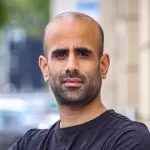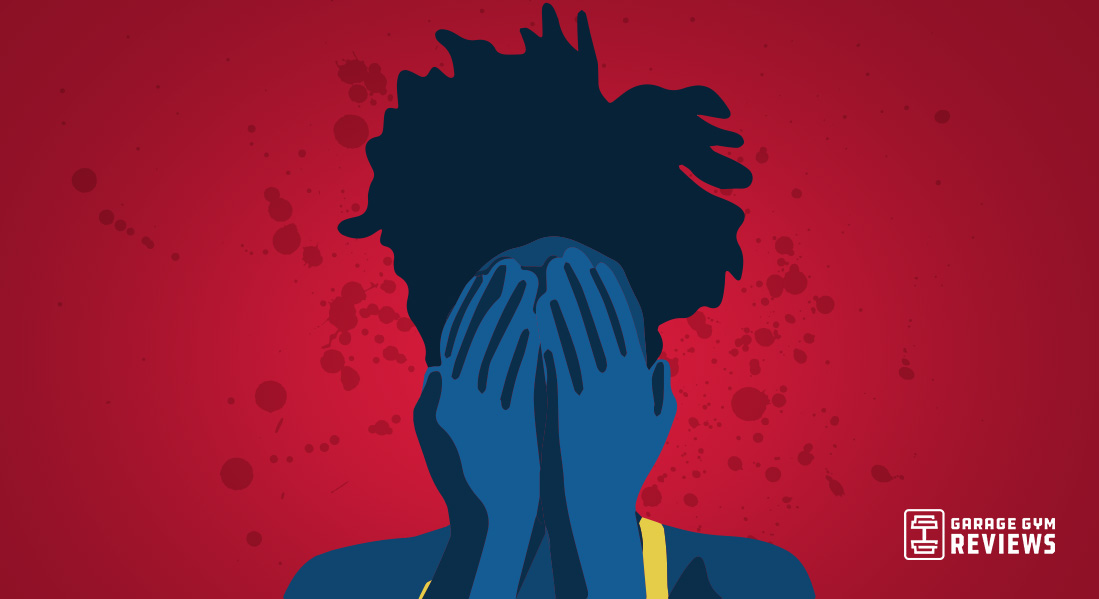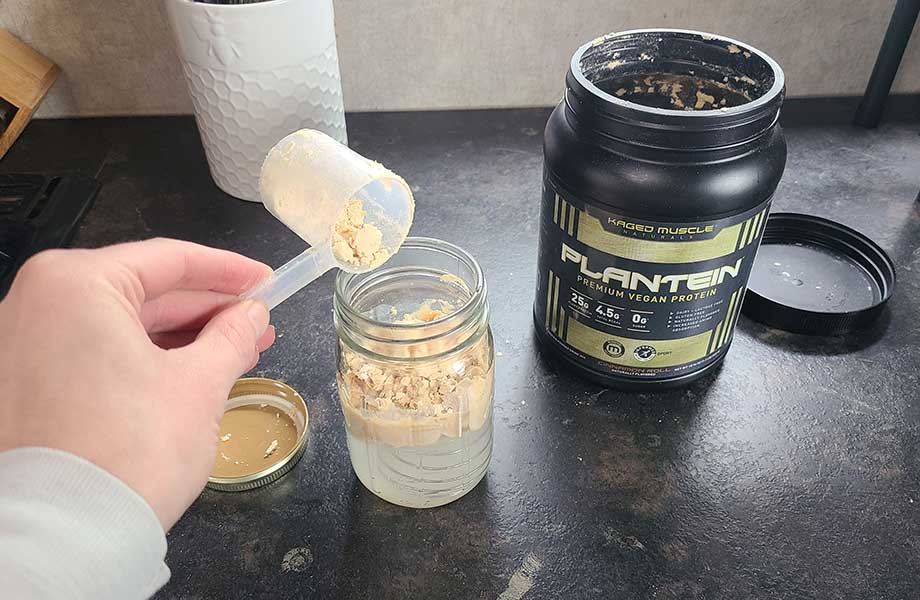Those looking to get a swole chest will likely turn to exercises such as bench presses, push-up variations, dumbbell bench presses, or chest dips. I love all of these exercises, but there’s another exercise that I’ve been doing on chest day pretty much since the day I started training over 10 years ago. You guessed it: Machine chest presses.
Hear me out before you judge. The chest press machine is more suitable for beginners or those recovering from an injury than other chest exercises. That said, it still builds muscle in your upper body. Personally, I love including it towards the end of my chest workouts to get extra training volume, usually using either drop sets or supersets.
I’ll begin this guide by explaining how to use a chest press machine with proper form and share modifications, variations, and alternative exercises you can try. Next, I’ll go through the benefits of the chest press machine and common mistakes to avoid.
Let’s get started on building your upper, middle, and lower chest!
How To Do A Machine Chest Press
There are two different types of machine chest presses, so setting yourself up depends on the type available. With the first option, you’ll use a pin to adjust your weight, whereas the second option requires you to add weight plates to both sides. Once you sit down, it’s important to retract your shoulder blades and lift your chest before performing the pressing movement.
How to do it:
- Use the pin on the chest press machine to set your desired weight. Alternatively, add the best weight plates to both sides.
- Adjust the seat height so that the handles are at chest level.
- Sit back, ensuring that your feet are firmly planted on the ground. You’ll want your back firmly resting against the back support.
- Grab both handles, then retract your shoulder blades so that your chest lifts up.
- Press both handles forward simultaneously until your arms are fully extended.
- Hold momentarily before returning your arms to their original position.
- Continue for repetitions.
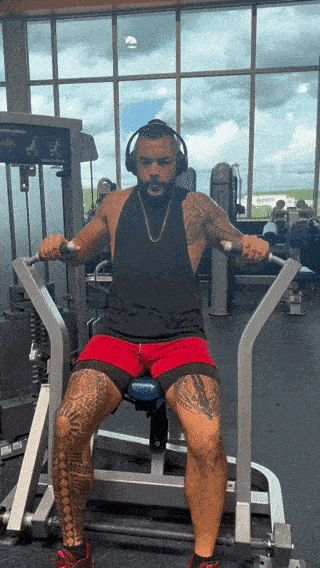
Modifications
- Dial it back: Lower your weight or reduce the number of reps or sets. Otherwise, there aren’t any ways to make the exercise easier because it’s designed for beginners.
- Make it harder: Add more weight or increase the sets. To place more emphasis on the chest, hold the top position for a few seconds before returning your arms to the starting position. There are also three chest press machine variations below for you to try before graduating to a full barbell bench press.
Chest Press Machine Variations
- Single-arm seated chest press: To fix muscular imbalances and address bilateral deficits1, press with one arm at a time. Everything stays the same, but you’ll only grasp one handle instead of both.
- Cable chest press: We included cable chest presses in our cable chest workout guide, and for good reason. Simply attach handles to both sides of a cable machine, get into the staggered stance, and press forward until the handles meet in the middle.
- Smith machine chest press: Place a flat or incline bench between a Smith machine, and add your preferred weight plates. Lie down, unrack the bar, and slowly lower it to your chest level. Pause momentarily, then push the bar up as you extend your arms.
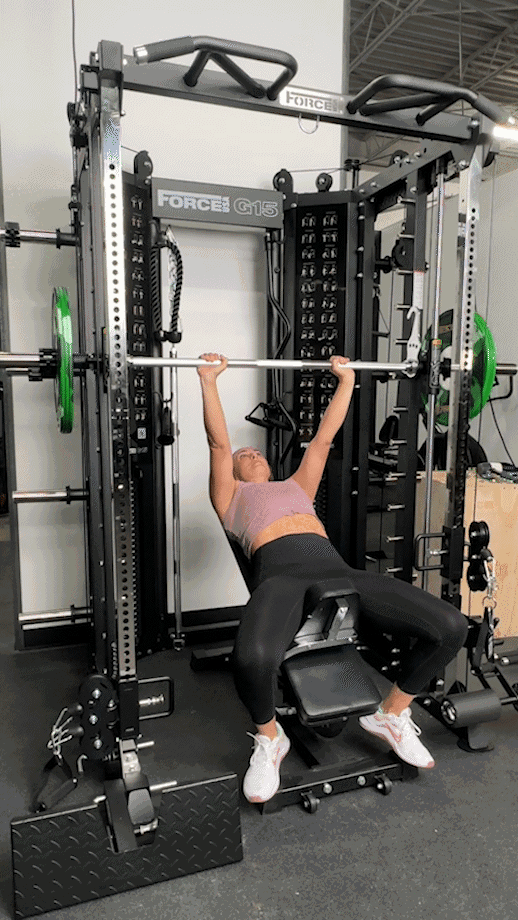
Chest Press Machine Alternatives
There are several reasons why you may want chest press machine alternatives. Your gym might not have this piece of gym equipment, or you may want to progress to other upper or lower chest exercises. Here are four alternatives you can try:
Barbell Bench Press
Why do it: Barbell bench presses are a compound exercise, which means they’ll hit multiple muscle groups. Machine chest presses do, too—you’ll see more on this below—but not to the same extent. Why? Because the bench press uses free weights rather than a fixed resistance machine. Therefore, this alternative is a natural progression when you find the chest press machine becoming too easy.
Further, a 2017 Frontiers in Physiology2 study found that multi-joint exercises such as the barbell bench press appear “more efficient for improving muscle strength and maximal oxygen consumption than programs involving single-joint exercises.”
How to do it:
- Add the required weight plates to the Olympic bar.
- Lie down on the flat bench, ensuring that your feet are flat on the ground. You’ll want your eyes directly underneath the barbell.
- Hold the bar firmly with your hands slightly outside of shoulder-width apart.
- Retract your shoulder blades and engage your core.
- Unrack the barbell before slowly lowering it toward your chest region. Pause.
- Push through your chest and triceps to extend your arms, once you’ve reached the top of the movement, lower the barbell back down with control.
- Keep going for the desired number of reps. When your reps are complete, rerack the barbell.
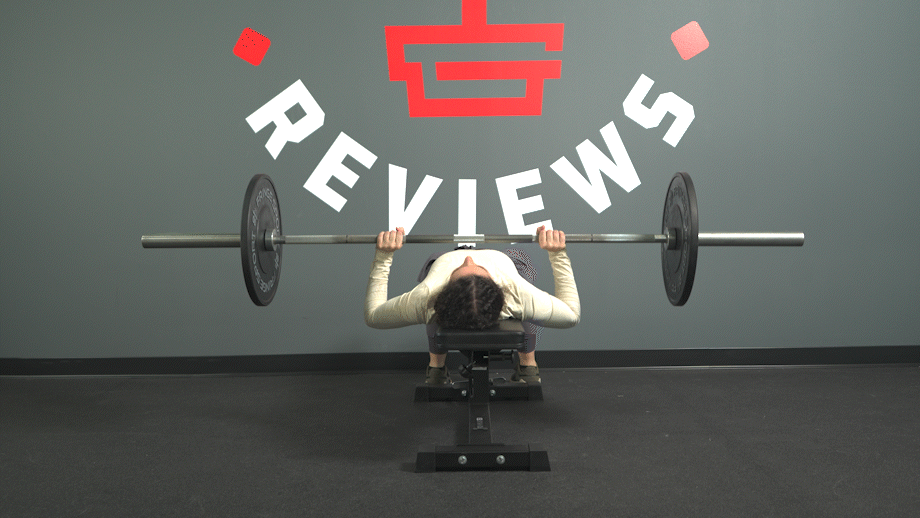
Expert tip: Although I’ve described the flat barbell bench press above, you can also do incline barbell bench presses. A 2020 International Journal of Environmental Research and Public Health3 study found that “an inclination of 30° produces greater activation of the upper portion of the pectoralis major” and “inclinations greater than 45° produce significantly higher activation of the anterior deltoid and decrease the muscular performance of the pectoralis major.”
Also, if you’re new to this movement or plan on lifting heavy, it’s always a good idea to enlist the aid of a dedicated spotter.
Dumbbell Bench Press
Why do it: Let’s say that adding a barbell bench press to your weekly chest day is still a bit too intimidating. How about progressing with the dumbbell bench press first? During the barbell bench press, your stronger side can compensate for your weaker side because of the nature of the exercise, but you won’t have this issue with dumbbell bench presses. You’ll also activate your stabilizer muscles throughout the movement.
How to do it:
- Place a pair of dumbbells on the floor in front of a flat bench.
- Squat down to grab the dumbbells, then sit down on the seat. The dumbbells should be resting on your quadriceps here.
- Lie back on the bench, ensuring that your feet are flat on the floor. Position the dumbbells just outside of your torso and near your chest region.
- Engage your core, lift your chest up, and press the dumbbells toward the ceiling.
- Hold momentarily when your arms are straight and the dumbbells are touching.
- Reverse the motion in a controlled manner until the dumbbells are outside of your torso.
- Repeat for repetitions.
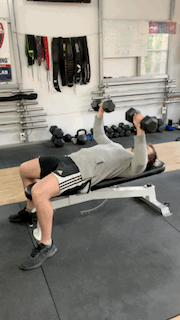
TRX Push-Up
Why do it: I could have included regular push-ups as a chest press machine alternative, but we decided on TRX push-ups because of the instability that the TRX suspension system brings. This challenges your upper body more than chest press machines and regular push-ups do. Apart from the TRX straps, you only need your body weight, which is another reason why I love this exercise.
How to do it:
- Adjust a TRX suspension system so that the straps are at full length. Alternatively, you can use gymnastic rings for this exercise.
- Grab the handles with an overhand grip (palms facing the floor) while standing.
- Walk your feet backward until you’re in the push-up position. Only your toes should be in contact with the ground here.
- Brace your core, then bend your elbows so that your torso moves towards the floor.
- Return to the original position by pushing the handles towards the ground.
- Push for reps.
RELATED: TRX Exercises
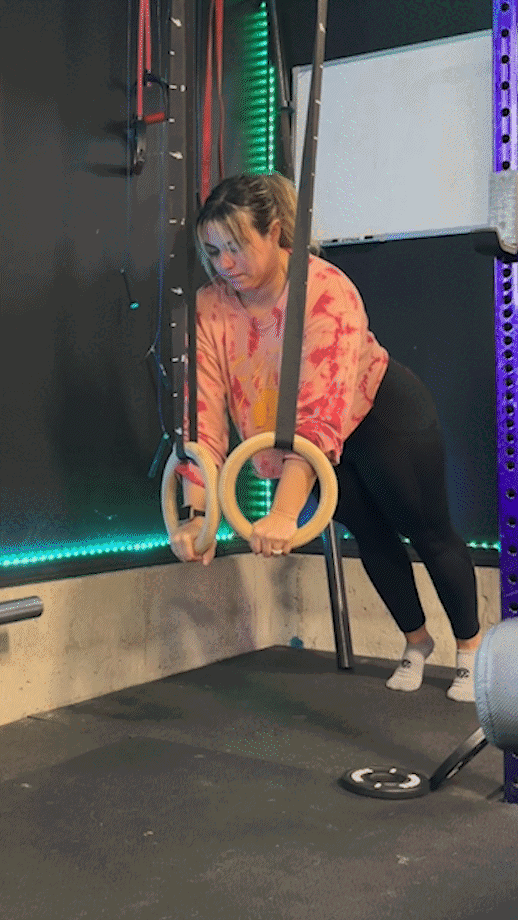
Pec Deck Machine
Why do it: The pec deck machine—aka chest fly machine—isolates your chest. If you’re a beginner to resistance training and uncomfortable with barbell bench presses or TRX push-ups, you can stick with beginner-friendly exercises such as the chest press machine and the pec deck machine. I’ve included it as a chest press machine alternative, but you can do both if your gym has both pieces of equipment.
How to do it:
- Use the pin on the pec deck machine to select your desired weight.
- Set the seat height so that the handles are in line with your chest when seated. (Some pec deck machines will also allow you to adjust the starting angle of your arms.)
- Sit down on the machine. Your back should be resting against the back support and your feet should be flat on the ground.
- Hold the handles, ensuring that you have a slight bend in your elbows.
- Lift your chest, then bring the handles together in front of your body. You’ll want to squeeze your chest muscles at the top of the movement.
- Slowly return the handles to their original position.
- Continue for the desired number of repetitions.
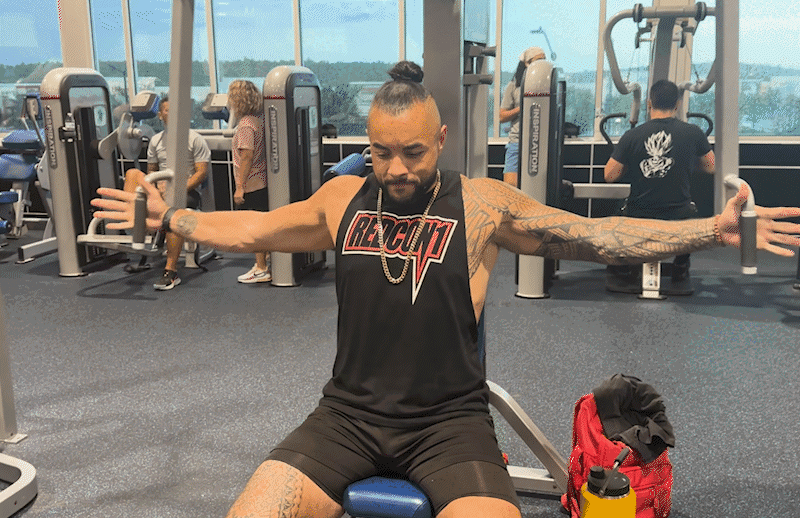
Benefits Of The Chest Press Machine
So, why should you include the chest press machine in your chest workouts? It builds muscle in your upper body, is suitable for beginners, and is great for drop sets and supersets. Let me elaborate:
Builds Muscle In Your Upper Body
The chest press machine gets a lot of shade from lifters who believe it isn’t a good substitute for the regular bench press. While I agree to an extent, the truth is that you can build muscle in your upper body using the machine chest press. You’ll primarily hit your chest muscles, then work your shoulders and triceps.
Suitable For Beginners
A fixed resistance machine is generally safer for beginners or those recovering from an injury because you can control your range of motion. Therefore, you’re less likely to get injured (or reinjured). Not only this but when you do free weights exercises such as dumbbell bench presses, you need to learn how to do them with proper form. With machine chest presses, the machine guides you through it.
Great For Drop Sets and Supersets
Even though I’ve been weightlifting for over 10 years, I often use the chest press machine towards the end of my chest workouts. In our guide on how many sets per muscle group per week, we discussed that doing 15 to 20 sets on a muscle group such as the chest is ideal to continue to make hypertrophy gains.
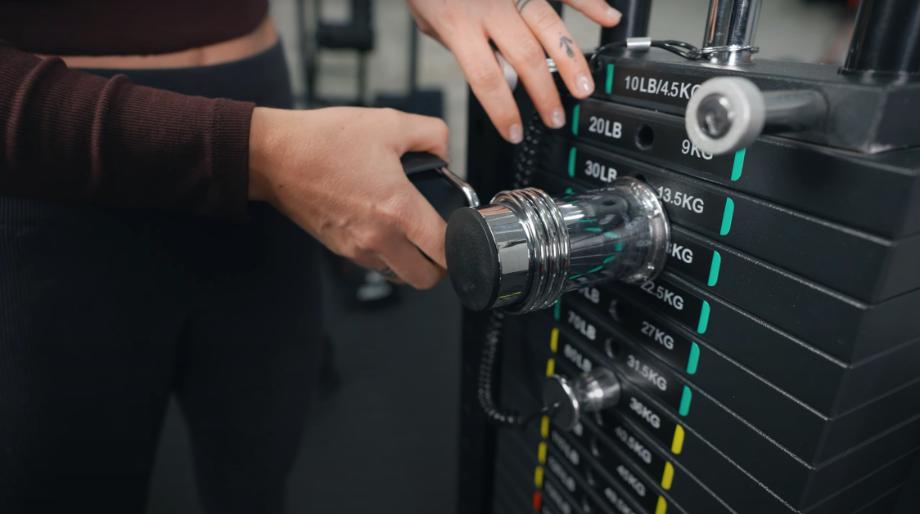
Usually, I’ll do either drop sets or supersets to save time. With drop set workouts, you do a set, drop to a lighter weight, and do a second set of the same exercise. Supersets are slightly different in that you do two exercises in quick succession with minimal rest in between. Machine chest presses will be one of the two exercises, with the second being either another chest exercise or even a triceps exercise.
RELATED: Best Triceps Workouts
Common Chest Press Machine Mistakes
I want you to use the chest press machine with proper form, which is why I’ve described below three common mistakes I often see clients and gym-goers make when doing this exercise that I wish they would stop doing:
Setup Is Incorrect
There are several things to consider with your chest press machine setup: your seat height, the position of your feet, your back resting against the back support, and retracted shoulder blades so your chest lifts. If you get any of these wrong, it may reduce the effectiveness of the exercise. Spend a few seconds ensuring everything is correct.
Weight Is Too Heavy
If you’re just starting, you likely won’t be able to lift the full weight stack during your machine chest presses—so don’t attempt to! I’ve been training for over 10 years and still haven’t managed this. Choose a weight that allows you to do the exercise using good form. You can then slowly progress over time.
Movement Is Performed Too Quickly
To feel the mind-muscle connection4 with the chest press machine, perform both the concentric (pushing the handles out) and the eccentric (bringing the handles toward you) phases of the exercise in a controlled manner. I often see clients doing the former slowly but rushing the latter. Slowing the movement will increase your muscles’ time under tension (TUT).
Muscles Worked By the Chest Press Machine
What muscle groups does the chest press machine activate? Primarily your chest muscles, but you’ll also build muscle in your triceps and anterior deltoids.

- Chest: Your pectoral muscles5 are responsible for moving your upper extremities in a wide range of motion, including flexion, adduction, internal rotation of the humerus, and stabilization of the scapula. The pectorals also elevate and depress the bones of your thorax.
- Triceps: The primary function of your triceps6 is the extension of your elbow joints.
- Anterior deltoids: Your anterior deltoid7 works with your pectoralis major to flex your arms while moving. Throughout abduction, your anterior deltoids—along with your posterior deltoid—stabilize your arms.
How To Use A Chest Press Machine: Final Thoughts
The chest press machine isn’t as admired as other chest exercises such as barbell presses, push-ups, or dumbbell presses. I consider it very suitable for beginners or those recovering from an injury. It’s also great for drop sets or supersets toward the end of your chest workouts. Using the machine chest press regularly may help build muscle in your upper body.
There are two types of chest press machines—one requires you to use a pin to adjust your weight, whereas, with the other, you add weight plates to both sides. Regardless of the type of machine available, remember to spend a few seconds setting yourself up correctly, choose a comfortable weight (that’s still challenging), and don’t rush through each rep.
How To Use A Chest Press Machine: FAQs
Are chest press machines effective?
As a certified personal trainer (CPT), I would say that chest press machines can be effective. I’ve been including them in my own workouts since I started training over 10 years ago, and regularly use them when programming for clients. They’re great for beginners or those recovering from an injury because—unlike free weights—the range of motion is controlled.
Even if you’re not a resistance training beginner, chest press machines can be effective.If your goal is to increase muscular hypertrophy, a 2017 Journal of Sports Sciences8 review found that training volume increases may produce greater gains.
To put this into practice, during your next chest day, include high-volume sets of machine chest presses toward the end of your workout.
Does the chest press increase chest size?
Yes, the chest press may increase your chest size. If you’re new to strength training, you’ll likely notice a difference in your chest size after doing the chest press regularly for one or two months.
There are a few factors to consider to continue making gains. Aim for 3 to 6 sets of 6 to 12 reps on the chest press, focusing on progressive overload. You’ll also want to ensure that you’re getting adequate protein in your diet and that you’re in a calorie surplus. Additionally, sleep, water intake, and rest days are important to increase muscle in your chest.
Do chest presses burn fat?
Exercising—including doing machine chest presses—helps burn calories, which can help you to lose weight and burn fat. However, just because you’re doing chest presses doesn’t mean you’ll automatically burn fat. To lose weight, you need to be in a calorie deficit, consuming less energy than you burn.
What is a good chest press machine weight?
A good chest press machine weight depends on several factors, including your age, gender, weight, how long you’ve been training, and fitness goals. If you’re new to the chest press machine, start with between 20 and 50 pounds and see how you do. For those who have been resistance training for some time, aim for between 50 and 100 pounds.
References
- Škarabot J, Cronin N, Strojnik V, Avela J. Bilateral deficit in maximal force production. Eur J Appl Physiol. 2016 Dec;116(11-12):2057-2084. doi: 10.1007/s00421-016-3458-z. Epub 2016 Aug 31. PMID: 27582260.
- Paoli A, Gentil P, Moro T, Marcolin G, Bianco A. Resistance Training with Single vs. Multi-joint Exercises at Equal Total Load Volume: Effects on Body Composition, Cardiorespiratory Fitness, and Muscle Strength. Front Physiol. 2017 Dec 22;8:1105. doi: 10.3389/fphys.2017.01105. PMID: 29312007; PMCID: PMC5744434.
- Rodríguez-Ridao D, Antequera-Vique JA, Martín-Fuentes I, Muyor JM. Effect of Five Bench Inclinations on the Electromyographic Activity of the Pectoralis Major, Anterior Deltoid, and Triceps Brachii during the Bench Press Exercise. Int J Environ Res Public Health. 2020 Oct 8;17(19):7339. doi: 10.3390/ijerph17197339. PMID: 33049982; PMCID: PMC7579505.
- Calatayud J, Vinstrup J, Jakobsen MD, Sundstrup E, Brandt M, Jay K, Colado JC, Andersen LL. Importance of mind-muscle connection during progressive resistance training. Eur J Appl Physiol. 2016 Mar;116(3):527-33. doi: 10.1007/s00421-015-3305-7. Epub 2015 Dec 23. PMID: 26700744.
- Baig MA, Bordoni B. Anatomy, Shoulder and Upper Limb, Pectoral Muscles. [Updated 2023 Aug 28]. In: StatPearls [Internet]. Treasure Island (FL): StatPearls Publishing; 2024 Jan-. Available from: https://www.ncbi.nlm.nih.gov/books/NBK545241/
- Tiwana MS, Sinkler MA, Bordoni B. Anatomy, Shoulder and Upper Limb, Triceps Muscle. [Updated 2023 Aug 28]. In: StatPearls [Internet]. Treasure Island (FL): StatPearls Publishing; 2024 Jan-. Available from: https://www.ncbi.nlm.nih.gov/books/NBK536996/
- Elzanie A, Varacallo M. Anatomy, Shoulder and Upper Limb, Deltoid Muscle. [Updated 2024 Jan 30]. In: StatPearls [Internet]. Treasure Island (FL): StatPearls Publishing; 2024 Jan-. Available from: https://www.ncbi.nlm.nih.gov/books/NBK537056/
- Schoenfeld BJ, Ogborn D, Krieger JW. Dose-response relationship between weekly resistance training volume and increases in muscle mass: A systematic review and meta-analysis. J Sports Sci. 2017 Jun;35(11):1073-1082. doi: 10.1080/02640414.2016.1210197. Epub 2016 Jul 19. PMID: 27433992.

